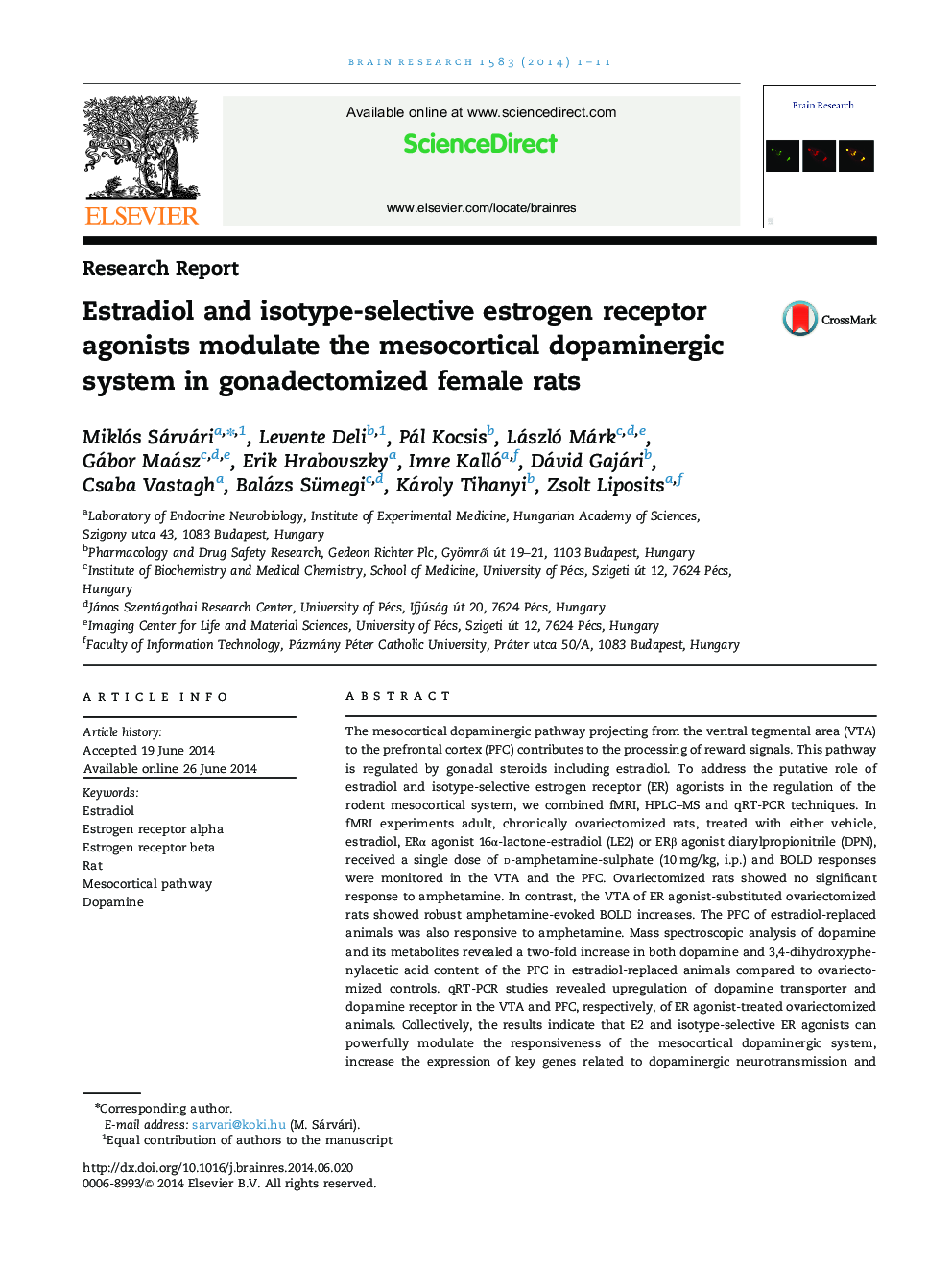| Article ID | Journal | Published Year | Pages | File Type |
|---|---|---|---|---|
| 4324138 | Brain Research | 2014 | 11 Pages |
•The PFC and VTA of ovariectomized rats do not respond to amphetamine.•E2 replacement restores responsiveness to amphetamine in both areas.•E2 augments dopamine and DOPAC content of the PFC.•ER agonists increase mRNA expression of dopamine receptors in the PFC.•ER agonists enhance mRNA expression of dopamine transporter in the VTA.
The mesocortical dopaminergic pathway projecting from the ventral tegmental area (VTA) to the prefrontal cortex (PFC) contributes to the processing of reward signals. This pathway is regulated by gonadal steroids including estradiol. To address the putative role of estradiol and isotype-selective estrogen receptor (ER) agonists in the regulation of the rodent mesocortical system, we combined fMRI, HPLC–MS and qRT-PCR techniques. In fMRI experiments adult, chronically ovariectomized rats, treated with either vehicle, estradiol, ERα agonist 16α-lactone-estradiol (LE2) or ERβ agonist diarylpropionitrile (DPN), received a single dose of d-amphetamine-sulphate (10 mg/kg, i.p.) and BOLD responses were monitored in the VTA and the PFC. Ovariectomized rats showed no significant response to amphetamine. In contrast, the VTA of ER agonist-substituted ovariectomized rats showed robust amphetamine-evoked BOLD increases. The PFC of estradiol-replaced animals was also responsive to amphetamine. Mass spectroscopic analysis of dopamine and its metabolites revealed a two-fold increase in both dopamine and 3,4-dihydroxyphenylacetic acid content of the PFC in estradiol-replaced animals compared to ovariectomized controls. qRT-PCR studies revealed upregulation of dopamine transporter and dopamine receptor in the VTA and PFC, respectively, of ER agonist-treated ovariectomized animals. Collectively, the results indicate that E2 and isotype-selective ER agonists can powerfully modulate the responsiveness of the mesocortical dopaminergic system, increase the expression of key genes related to dopaminergic neurotransmission and augment the dopamine content of the PFC. In a broader sense, the findings support the concept that the manifestation of reward signals in the PFC is dependent on the actual estrogen milieu of the brain.
